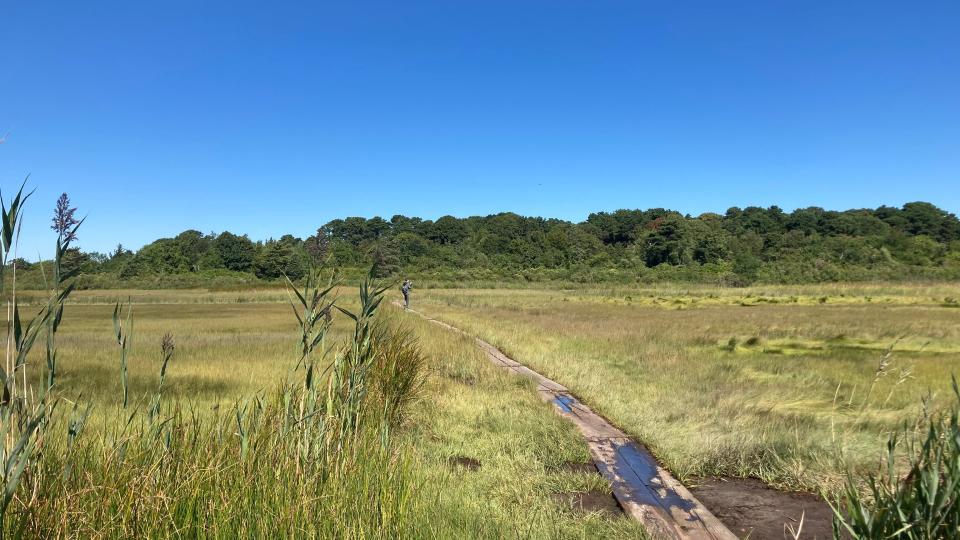Dig archaeology? Cape Cod Museum of Natural History offers island walk with expert
BREWSTER — You may be a master of modern life on Cape Cod, with a fizzy cell phone, a viral TikTok account and a degree in circling rotaries. But have you ever stopped to wonder how folks lived on the Cape thousands of years ago, way before supermarkets and Uber?
That's when you need to talk to an archaeologist. They get down to the nitty gritty of past human life, carefully studying what was left behind. Those clues can be a wicked cool way to figure out what was going on way back when. And that fires up imagination and curiosity, qualities that can make you the star of your next cocktail party.
But those archeologists can be hard to find. They're always out somewhere, maybe crouching down low so you can't see them, carefully excavating and sifting and thinking. Seeing one in the wild is like spotting a rare bird, a task too tall for a busy modern person.

Luckily, however, the Cape Cod Museum of Natural History in Brewster is presenting a series of walks with archaeologist Dan Zoto, a fellow who can make the past come alive. The walk takes place in one of the Cape's most beautiful spots: Wing Island, behind the museum. Zoto will hold forth on the archaeology and history of the island, a history that includes Native Americans, Brewster's first colonists, 19th century salt works and more.
Walking in the footsteps of ancestors
Zoto said the walks have extra panache because of the sense of place. "It really helps to be talking about the subjects when you're standing where it happened," he said in a phone interview.
The conversation with Zoto was a real mind-blower, as he described the changing environment around Wing Island over the last 10,000 years, which led to different uses of the land by inhabitants. By dating Native American artifacts, it appears that the island was occupied until perhaps 4,000 years ago. After that, the sea started nibbling away, eventually leading to the formation of the marsh we see today.
Dig this: Historian goes deep into the archaeology of Cape Cod
Those changing dynamics may have led to Native peoples choosing to live further up the Stony Brook Valley, where occupation sites have been located. But the shellfish resources around Wing Island were likely a huge boon for folks who lived off the land, said Zoto. "It's the diversity of habitat and ecosystem in a small place that really made the Cape special for Native people," said Zoto. "So many resources in a small area."
Exercise mind and body with guided walks
Zoto's walk will also touch upon the legendary John Wing, the first European owner of the island, who came to Brewster in the 1650s. According to Zoto, Wing was brought into court for erecting a building outside the boundaries of any town. This was likely a tax issue, said Zoto, and once it was determined that Wing could pay taxes to the town of Yarmouth, he was allowed to stay.
Curious Cape Cod:
The whole conversation with Zoto was filled with cool nuggets, and it's hard to imagine a more pleasant and instructive way to spend a morning or afternoon on Cape Cod. Four walks remain on the schedule: Sept. 21 at 1 p.m., and Oct. 5, 15 and 19 at 11 a.m. They start at the Cape Cod Museum of Natural History, 869 Main St., Brewster. Tickets are $10 per person and do not include museum admission. The walks cover about 1.3 miles over somewhat-challenging terrain.
This article originally appeared on Cape Cod Times: Discover Wing Island: Cape Cod museum offers walk with archaeologist

